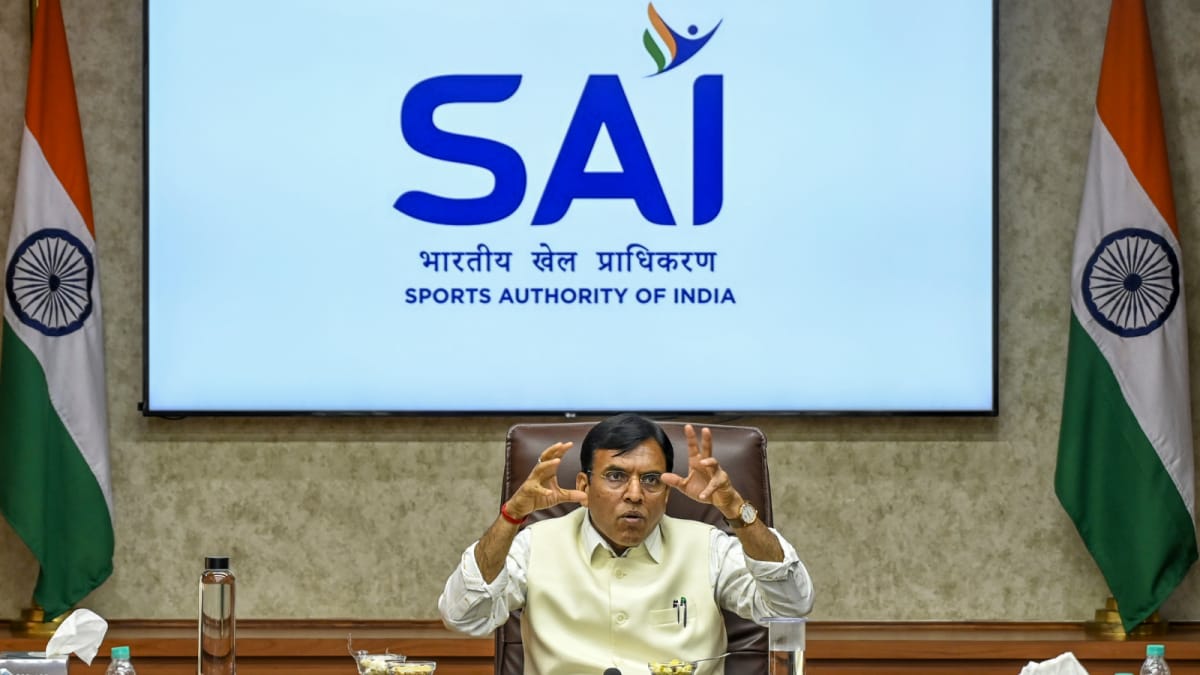- October 15, 2025
Sports Ministry Unveils Draft Framework For New National Sports Governance Act

Last Updated:
The Sports Ministry unveiled draft rules for the new sports act, proposing a National Sports Board, Tribunal, and Election Panel to reform sports administration in India.
Sports Minister Mansukh Mandaviya (PTI)
The Sports Ministry on Wednesday revealed its draft framework for implementing the upcoming National Sports Governance Act, 2025, a major step toward reforming how sports are managed in India.
The proposed plan includes setting up a three-member National Sports Board (NSB) to oversee sports federations and a tiered eligibility system for Sportspersons of Merit (SOM) who wish to join sports administration.
The ministry has published the draft rules for the National Sports Board (NSB), National Sports Tribunal (NST), and National Sports Election Panel (NSEP) on its official website, inviting public feedback within 30 days.
“These Rules have been formulated to facilitate the implementation of the National Sports Governance Act, 2025,” the ministry said.
“The Act seeks to ensure ethical practices, fair play across all levels of sport, safeguard the interests of sportspersons as the primary stakeholders, and create a robust ecosystem for sports in the country.”
National Sports Board (NSB): Oversight and Affiliation
The NSB, the central body under the new law passed by Parliament in August, will have wide-ranging powers — including granting affiliation to National Sports Federations (NSFs), monitoring their finances, and penalizing them for misconduct.
Importantly, federations must obtain NSB affiliation to qualify for government funding.
According to the proposal, the Board will include a Chairperson and two members — individuals “of ability, integrity and standing,” with experience in public administration, sports governance, sports law, or related fields.
Appointments will be made by a search-cum-selection committee headed by the Cabinet Secretary, with the Sports Secretary, one expert in sports administration, and two national sports awardees nominated by the government as members.
An age cap of 65 years will apply, with each term lasting three years or until the member turns 65 — whichever comes first. Members may be reappointed once, subject to the age limit.
The ministry has also set clear conflict-of-interest rules:
“The Chairperson or any Member shall not, during their term of office, hold any position in any International Sports Body, National Sports Body or their affiliate unit, or any National Sports Promotion Organisation,” it stated.
National Sports Tribunal (NST): Faster Dispute Resolution
The NST will handle all sports-related disputes, ensuring such matters do not end up in regular courts — where over 300 sports cases are currently pending. Tribunal members will serve four-year terms with an age cap of 67 years.
To prevent conflicts, tribunal members cannot practice before it after retirement or take on arbitration work while in office. For two years after leaving the tribunal, they are also barred from working with any organization involved in cases heard by the NST.
Financial Accountability of the NSB
The NSB must prepare an annual balance sheet, to be submitted for auditing to the Comptroller and Auditor General of India (CAG) or a designated authority within three months of the financial year’s end.
National Sports Election Panel (NSEP): Transparent Sports Elections
The NSEP will oversee elections for all national sports bodies to ensure fairness and transparency. It must maintain a minimum roster of 20 qualified members at all times.
Criteria for Sportspersons of Merit (SOM)
The Act encourages athletes to participate in sports governance, and every federation’s general body must include at least four Sportspersons of Merit, either elected or nominated.
Eligible athletes must have retired for at least one year before applying for administrative roles. For the National Olympic Committee, only those who have won or participated in the Olympics can be considered.
For national federations, the criteria are more flexible — athletes with a National Sports Award or World Championship medals may also qualify.
The draft divides athletes into ten tiers, ranked by achievement:
- Tier 1: Olympic or Winter Olympic medalists
- Tier 2: Athletes who have competed in two or more Olympic or Winter Olympic Games
Lower tiers follow, covering achievements at continental, national, and recognized international levels.
(with PTI inputs)

After training in the field of broadcast media, Siddarth, as a sub-editor for News18 Sports, currently dabbles in putting together stories, from across a plethora of sports, onto a digital canvas. His long-term…Read More
After training in the field of broadcast media, Siddarth, as a sub-editor for News18 Sports, currently dabbles in putting together stories, from across a plethora of sports, onto a digital canvas. His long-term… Read More
October 15, 2025, 15:51 IST
Read More




